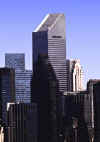
|
New York
Architecture Images-Upper East Side Citicorp Building |
|
architect |
Hugh Stubbins Associates (design architects), Emery Roth & Sons (architects) |
|
location |
Lexington Avenue between 53rd and 54th Streets |
|
date |
1972-78 |
|
style |
International Style II |
|
construction |
|
|
type |
Office Building |
|
|
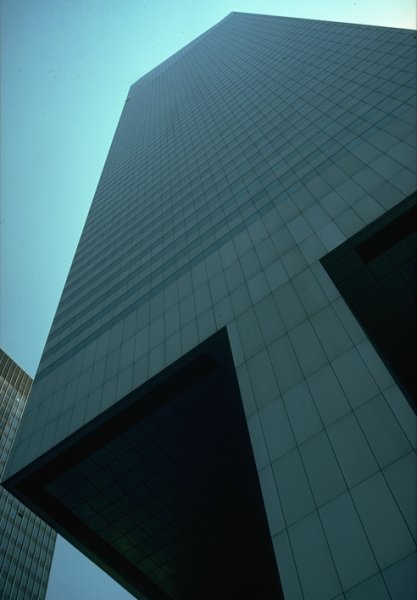 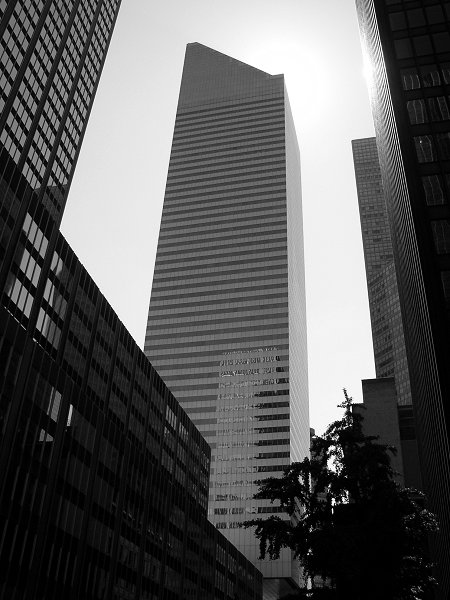 |
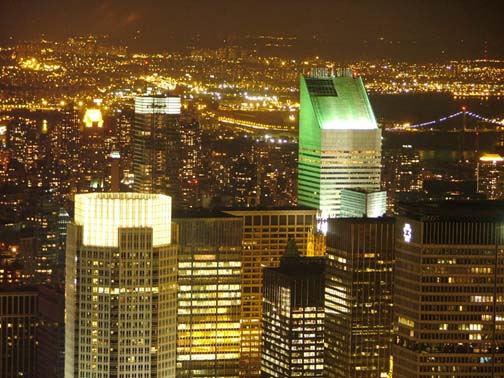 |
|
|
images |
|
|
|
 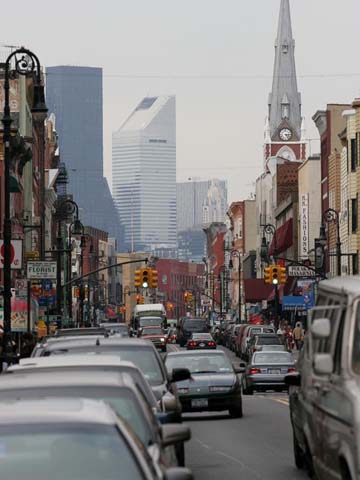 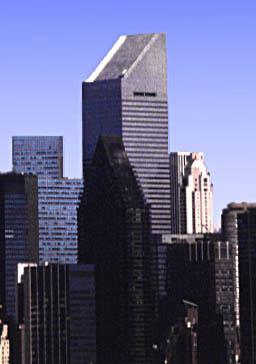 |
| As seen from Greenpoint, Brooklyn. | |
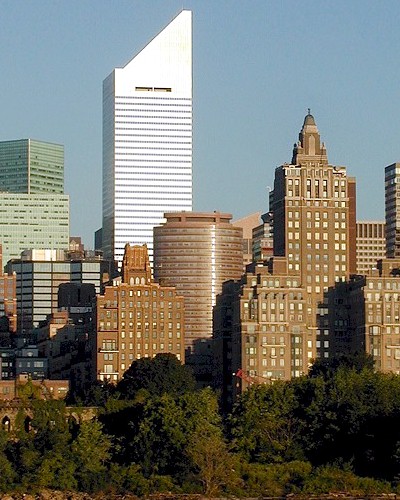 |
|
.jpg) |
|
| Night View of Citigroup Center from GE Building. | |
.jpg) |
|
| Base of the Citigroup Center | |
.jpg) |
|
| This 900-foot aluminum and glass skyscraper is the fourth tallest building in New York and the tenth tallest in the world. The entire structure rests on a central core and four outriding column-like towers. A computer driven load mass damper enables the reduced number of vertical supports and ensures the stability of this complex structure. Double-decker elevator cars reduce the area devoted to the vertical circulation core, leaving more space available for offices. With so few interior columns, ample room is available for numerous amenities, such as a six-story retail wing and a sunken plaza that leads directly to the subway. Plans for creating residential space on the upper floors were abandoned due to zoning restrictions. Regardless, as a mixed-use complex, this building has more in common with Art Deco skyscrapers than with the purely corporate structures of the International Style. The obliquely slanting roof--originally designed to hold solar panels--embodies another break with the practices of corporate high modernism. Standing out among the flat-roofed prisms of midtown, Citicorp's pitched roof has become a symbol of the corporation, a marker of corporate identity in an emerging area. The building's bold presence helped to revitalize the commercial area located to the east of Park Avenue. | |
|
History The northwest corner of the site was originally occupied by St. Peter's Evangelical Lutheran Church which was founded in 1862. In 1905 the church moved to the location of 54th Street and Lexington Avenue. Early engineering details From the beginning, the Citigroup Center was an engineering challenge. When planning for the skyscraper began in the early 1970s, the northwest corner of the proposed building site was occupied by St. Peter's Lutheran Church. The church allowed Citicorp to demolish the old church and build the skyscraper under one condition: a new church would have to be built on the same corner, with no connection to the Citicorp building and no columns passing through it, because the church wanted to remain on the site of the new development, near one of the intersections. Architects wondered at the time if this demand was too much, and if the proposal could even work. Structural engineer William LeMessurier set the 59-story tower on four massive 114 foot (35 m) high columns, positioned at the center of each side, rather than at the corners. This design allowed the northwest corner of the building to cantilever 72 feet (22 m) over the new church. To accomplish these goals LeMessurier designed a system of stacked load bearing braces, in the form of inverted chevrons. Each chevron would redirect the massive loads to their center, then downward into the ground through the uniquely-positioned columns. Engineering crisis of 1978 Changes during construction led to a finished product that was structurally unsound. In 1978, prompted by a question from a student, LeMessurier discovered a potentially fatal flaw in the building's construction: the skyscraper's bolted joints were too weak to withstand 70-mile-per-hour (113 km/h) wind gusts at specific angles. While LeMessurier's original design and load calculations for the special, uniquely-designed 'chevron' load braces used to support the building were based on welded joints, a labor and cost-saving change altered the joints to bolted construction after the building's plans were approved. The engineers did not recalculate what the construction change would do to the wind forces acting on two surfaces of the building's curtain wall at the same time; if hurricane-speed winds hit the building at a 45-degree angle there was the potential for catastrophic failure due to bolt failure. The wind speeds needed to topple the models of Citigroup Center in a wind-tunnel test were predicted to occur in New York City every 55 years. If the building's "tuned mass damper" went offline, the necessary wind speeds were predicted to occur every 16 years. LeMessurier reportedly agonised over how to deal with the problem - making it known to the wider world risked ruining his professional reputation. But with hurricane season fast approaching, he took the bold decision to approach Citicorp directly, and advise them of the need to take swift remedial action. He convinced Citicorp to hire a crew of welders to repair the fragile building without informing the public, a task made easier by the press strike at that time. For the next three months, a construction crew welded two-inch-thick steel plates over each of the skyscraper's 200 bolted joints during the night, after each work day, almost unknown to the general public. Six weeks into the work, a major storm, Hurricane Ella (1978 Atlantic hurricane season), was off Cape Hatteras and heading for New York. With only half the reinforcement finished, New York City was hours away from emergency evacuation. Luckily, Ella turned eastward and veered out to sea, buying enough time for workers to permanently correct the problem. Despite the fact that nothing happened as a result of the engineering gaffe, the crisis was kept hidden from the public for almost 20 years. It was publicized in a lengthy article in The New Yorker in 1995. LeMessurier was criticized for insufficient oversight leading to bolted rather than welded joints, for misleading the public about the extent of the danger during the reinforcement process, and for keeping the engineering insights from his peers for two decades. However, his act of alerting Citicorp to the problem inherent in his own design is now used as an example of ethical behavior in several engineering textbooks. After the modifications of the bolted members were completed, the building is now generally considered to be one of the most structurally sound skyscrapers in the world. Notable features To help stabilize the building, a tuned mass damper was placed in the mechanical space at its top. This substantial piece of stabilizing equipment weighs 400 tons (350 metric tons) and has a volume of 255 cubic feet (7 m³). The damper is designed to counteract swaying motions due to the effect of wind on the building and reduces the building's movement due to wind by as much as 50%. Citigroup Center was the first skyscraper in the United States to feature a tuned mass damper. The building features double-deck elevators, which are separated to serve only odd or even floors. The intersection at which the building is located was immortalized in a song by punk rock band The Ramones. The song, written by Dee Dee Ramone and released in February 1976, refers to a famous spot for male prostitution, where it is speculated that Ramone himself had worked as a "hustler". The corporate headquarters of Citigroup are not located in this building, but across the street in 399 Park Avenue. References General Horsley, Carter B. The Midtown Book. Found at The City Review. PBS's "Building Big" Series A Potentially Disastrous Design Error Specific ^ Joe Morgenstern (1995), "The Fifty-Nine-Story Crisis", The New Yorker, May 29, 1995. Pages 45–53. ^ Eugene Kremer (2002). "(Re)Examining the Citicorp Case: Ethical Paragon or Chimera", Cross Currents, Fall 2002, Vol. 52, No 3. |
|
|
links |
|